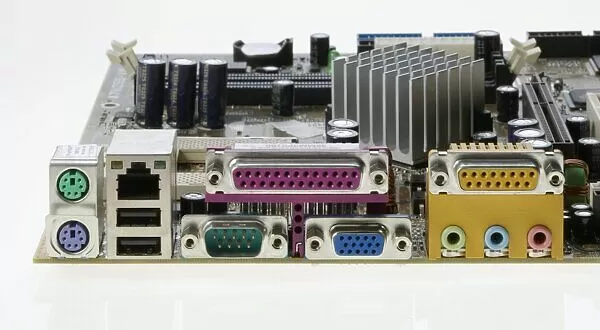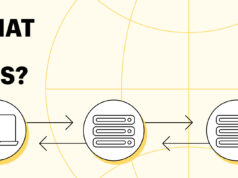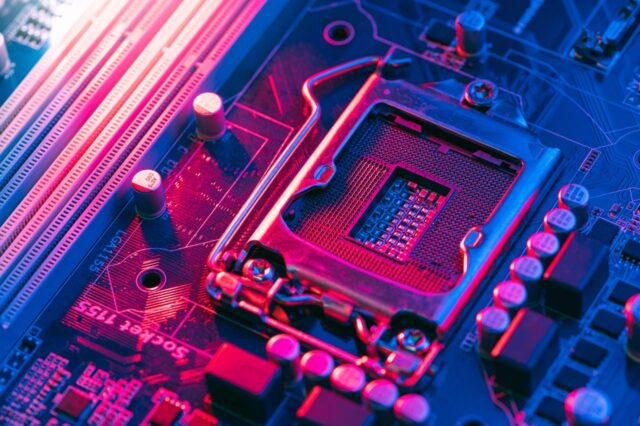
Have you ever wondered what lies beneath the surface of your PC? Just like a human, the computer is held together by essential components that keep it functioning. If you want to understand more about how your PC operates and how to troubleshoot problems, take a deeper dive into the anatomy of a motherboard.
Motherboard Components
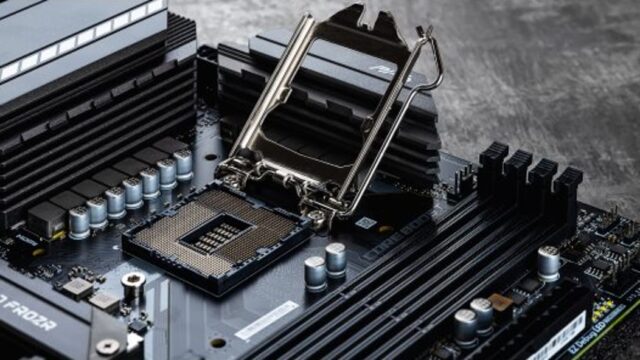
The motherboard is the most important component of any personal computer system. It serves as the foundation for every component that is connected to it, providing both physical and electrical connections between them. Understanding the anatomy of a motherboard and its different components is key to building an efficient, powerful computer.
They contain several slots, connection ports, and other physical components that provide power and data transfer. These elements can be used to connect additional components such as CPU, memory, storage drives, display devices, printers, port replicators and more. In this article we’ll break down each of these aspects in detail to help you better understand what a motherboard does and how it works.
Physical Components
The physical components of a motherboard are essential for creating connections between individual parts. The main pieces are:
1. CPU socket: This socket type holds the CPU in place on the board’s surface and makes electrical contact with it during operation.
2. RAM sockets: RAM sockets provide an interface for RAM sticks to be securely inserted into the board. Dual-channel memory support is common on modern motherboards.
3. Expansion slots/interconnects: Expansion slots allow users to add additional PCIe cards or interface cards into their system; specific types vary by being full-length (legacy) or half-length (modern). Interconnects are used to connect smaller components such as Wi-Fi cards or even USB ports onto the board using micro ribbon cables.
4. Chipset heatsink/cooling fans (optional): Cooling solutions may be installed in older motherboards or extra large systems that may otherwise generate significant heat due to electrical current passing through multiple components at once; this usually consists of a passive heatsink overtop of a larger gold heatsink for radiation dissipation. Cooling fans can also be plugged into various fan headers if necessary.
Motherboard Connectors and Ports
It is the central hub of any computer system, connecting several physical and digital components that comprise the computer. All of these devices are linked together by a variety of connections and plugs, which allows for smooth communication between the components necessary to turn on a modern day PC. Here we will take a look at these connections, examining their function, type and size in order to better understand how motherboards interact with modern technology.
Connectors range from simple pins used to transfer data between RAM modules, expansion cards or peripherals such as mice and keyboards, up to multi-conductor buses providing multiple connection points for different purposes such as SATA – the basic building block of most hard drive connections today. Video cards have their own ports so they can be connected easily to monitors or television sets. USB ports have become increasingly common as they allow even more external devices to be hooked up. These range from cameras and drive enclosures through to wireless networking dongles and specialised peripherals like game controllers and audio mixing desks. Ethernet ports have been around since the late 1990s, providing high speed network communication used in short range applications such as 802.11 WiFi routers or fibre optic signal repeaters over longer distances across an internet backbone structure. Each port has its own signal processing technology which allows them to send data quickly without corrupting transfer rates over long distances.
Motherboard Power Connectors
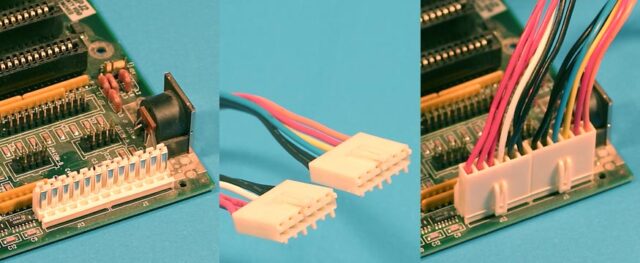
It is the “heart” of the computer and is responsible for powering the PC and its components. In order to do this, it needs to be supplied with power. This is done through two types of power connectors: ATX-style and Non-ATX-style connectors.
ATX-style connectors have a set of 24 pins that are located on the motherboard and are used for providing power to components like the processor, RAM modules and other devices. Also known as an ATX main power connector, these connectors also provide a core voltage to parts on the board such as capacitors and transistors.
Non-ATX style connectors are usually 6 or 8 pin configurations that can be found near cards like video cards which require additional power in addition to what’s already supplied by the main ATX connector. Additionally, some of them may also have supplemental Molex or Berg Connectors for supplying additional horsepower depending on need. It’s important to check your motherboard manual to find out which type of connector your specific model requires as compatibility issues could occur otherwise.
Motherboard Cooling Solutions
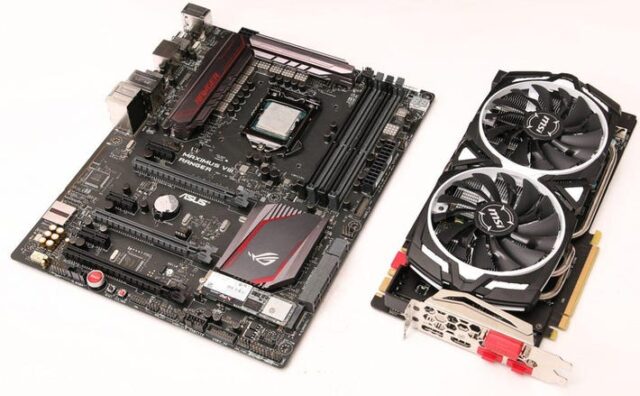
They come with some form of cooling built-in to maximize computer performance. Without proper cooling, components can quickly become damaged or even destroyed due to excessive heat. The effectiveness of a motherboard’s cooling solution comes down to its design, as well as the type and number of cooling components installed on it.
The most common ways of providing proper cooling are air and liquid based solutions. Air-based solutions usually entail having several strategically placed fans on the motherboard which draw in ambient air from around the case, thus dispersing heat by expelling the airflow away from it. Liquid-based solutions involve using a liquid (usually water) that passes through several pipes or blocks which are connected directly to a CPU, memory, GPU and other components in order to draw out heat generated from them and disperse it away from the board.
In addition to having active fan or liquid cooling systems for ventilation purposes, motherboards also feature passive components such as heat sinks and heat spreaders which attach directly onto essential processors such as CPUs and GPUs. These are typically made of metal like aluminum which easily conducts heat away from chips in order to be dispersed elsewhere at a faster rate than simply relying on airflow alone. Additionally these components have unique designs that enable air to flow over their surface area more efficiently while helping keep internal temperatures down.
Conclusion
In conclusion, the motherboard is the cornerstone of any computer system, orchestrating most of the PC’s functions and supplying its many components with electricity. Understanding how your PC motherboard works will help you diagnose any issues it may have as well as make informed decisions when shopping for upgrades or parts.
With proper care and maintenance, your motherboard can last for many years without failure – a crucial element in creating a reliable computing device.

